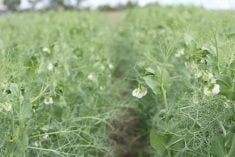Farmers could be in for a surprise if they plant extra oat acres this spring with expectations of good returns.
Randy Strychar, analyst with OatInsight, says oats are falling on the crop-to-crop comparison rankings.
“If they grow 10 percent more acres, or if Ag Canada is right and they grow 17 percent more, look out mama,” Strychar said about his and Agriculture Canada’s acreage expectations.
“This is not looking good now. A 10 percent increase is going to add onto the pile, and we’ve got a bigger pile than we had before.”
Read Also

Canada must change to remain a prosperous country
Several developments in early November will likely be important for the Canadian economy, including agriculture, helping define its evolution for the coming year and beyond.
Many farmers began 2010 looking at positive returns for 2010-11 oats. Many crop calculators placed oats second to canola in returns.
But the situation has since taken a turn for the worse. Demand has slumped and there is no indication it will return soon.
As a result, Agriculture Canada’s estimate in its March forecast of supply and demand of a 17 percent increase in oat acres is more bearish than its previous 25 percent increase projection in November.
The earlier projection, and early industry projections of a 10 to 20 percent increase, were made when oat stocks were falling, demand was good and prices were firm.
Since then, U.S. demand has slumped in the human food and horse feed market, prompting the formerly strong prices to slump.
Chicago July oat futures peaked at the beginning of 2010 at $2.90 per bushel, fell in early January, recovered about $2.50 and then began another fall to about $2.26.
“I am not an optimist any longer,” said Strychar, who added he is dreading addressing a group of farmers in Wadena, Sask., later this month.
“Without an increase in food sales, you won’t see an increase in exports, and we’re not seeing demand increase.”
OatInsight’s acreage survey suggests farmers in core oat-growing areas plan just an average crop, which means the danger to the market is from farmers who don’t normally grow the crop.
Strychar warned that those
farmers will probably harvest poorer yields than top oat producers, and then face falling prices.
“If there’s going to be a surge in acreage, it’ll be in the peripheral areas,” he said.
Statistics Canada’s survey of farmers’ seeding intentions will be published April 19.















